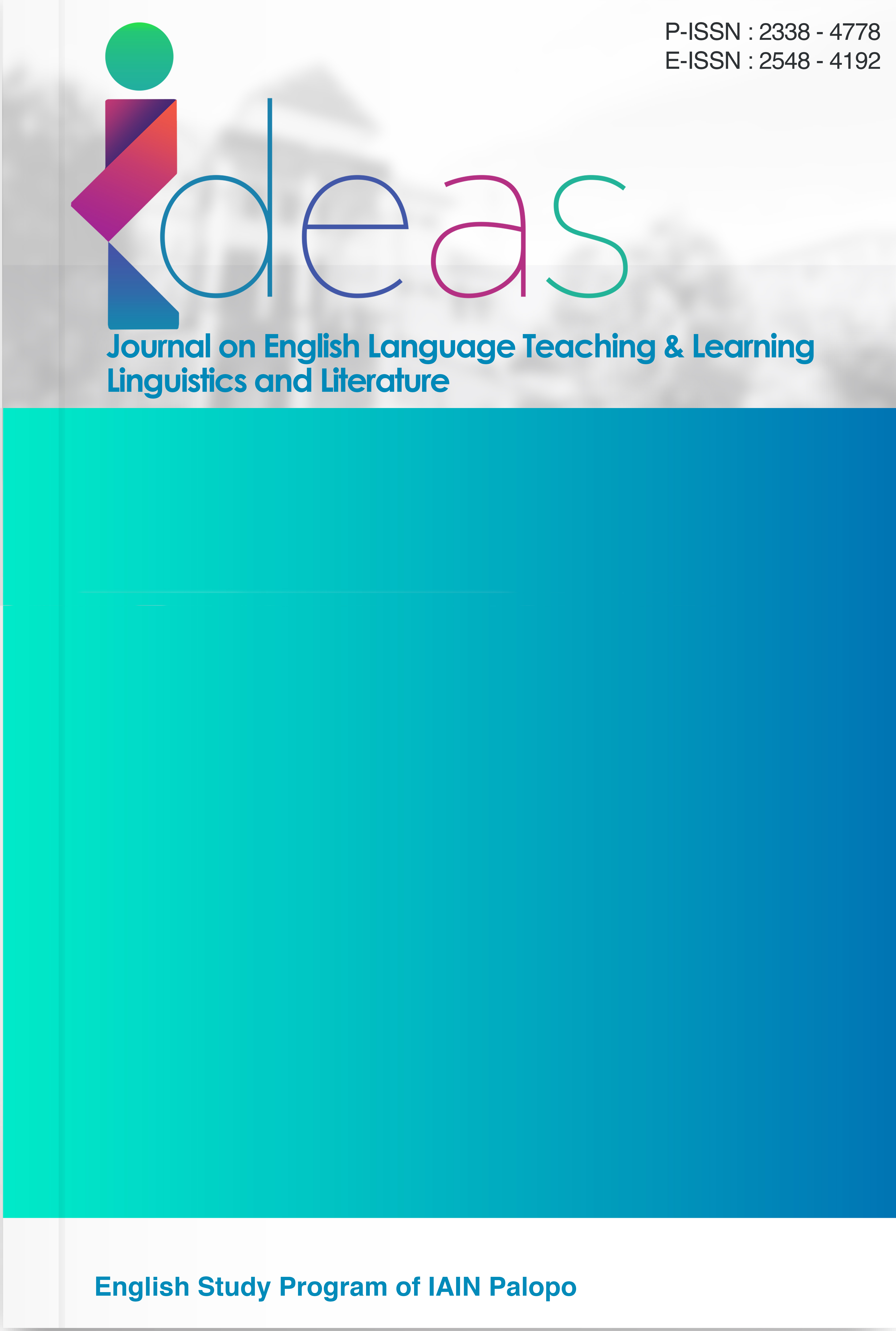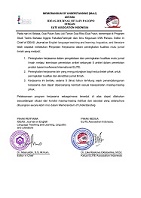Comparison of the Use of Discourse Markers in English Political Speeches between Native and Non-native Speakers
DOI:
https://doi.org/10.24256/ideas.v13i2.6308Keywords:
discourse markers; political speeches; native speakers; non-native speakers.Abstract
This study aims to analyze the use of Discourse Markers (DMs) in politicians' speeches on the USINDO YouTube Channel. DMs are used to organize, manage, and connect communication. Then politics becomes a public concern and USINDO becomes one of the signs of bilateral relations between Indonesia and America. The analysis was conducted from the speeches of four politicians, two from Indonesia as non-native speakers and two from America as native speakers, and used Fraser's 2009 theory. It was found that 670 markers were used by Native and Non-native. Namely Contrastive Discourse Markers (CDMs), Elaborative Discourse Markers (EDMs), and Inferential Discourse Markers (IDMs). The frequent markers found are EDMs such as 'and', CDMs such as 'but', and IDMs such as 'so'. Furthermore, both native and non-native speakers of English use DMs in political speeches for similar purposes, such as organizing discourse, managing transitions, clarifying points, and ensuring politeness. Then the different DMs are used more often, organically, and successfully in political speeches by native English speakers, who also have a more varied understanding of its use and do not use overlapping double markers.
References
Aijmer, Karin. (2015). Analysing Discourse Markers in Spoken Corpora: Actually, as a Case Study. 10.1057/9781137431738_5.
Aşık, Asuman & Cephe, Paşa. (2025). Discourse Markers and Spoken English: Nonnative Use in the Turkish EFL Setting. English Language Teaching. 6. 144-144. 10.5539/elt.v6n12p144.
Cornish, L. (2006). Introduction. In L. Cornish (Ed.), Reaching EFA through multi-grade teaching: Issues, contexts, and practices (pp. 1-8). Armidale, NSW: Kardoorair Press.
Creswell, J. (2016) Research in Education: Design, Conduct, and Evaluation of Quantitative and Qualitative Research (Translated by Kouvarakou, N.). Ion (Year of Publication of the Original 2005), Athens.
Crible, Ludivine & Abuczki, Agnes & Burkšaitienė, Nijolė & Furkó, Péter & Nedoluzhko, Anna & Rackevičienė, Sigita & Valunaite Oleskeviciene, Giedre & Zikánová, Šárka. (2019). Functions and translations of underspecified discourse markers in TED Talks: a parallel corpus study in five languages. Journal of Pragmatics. 142. 139-155.
Esmail Faghih, Akbar Mousaee. Vol 2, No 6 (2015), Enhancing EFL Learners' Reading Comprehension Ability through Multimedia-Based
Fraser, S. (2009) Is There Ethnic Discrimination in the UK Market for Small Business Credit? International Small Business Journal, 27, 583-607. http://dx.doi.org/10.1177/0266242609338756
Graber, D. (1993). Mass Media and American Politics (3rd ed.). Washington, DC: Congressional Quarterly Press.
Jabeen, F., & Chaudhry, A. S. (2011). Chemical Compositions and Fatty Acid Profiles of Three Freshwater Fish Species. Food Chemistry, 125, 991-996.
https://doi.org/10.1016/j.foodchem.2010.09.103
Jabeen, Farhat & Rai, Asim & Arif, Sara. (2011). A corpus-based study of discourse markers in British and Pakistani speech. International Journal of Language Studies. 5. 69-86.
Johnstone, B. (2017). Discourse analysis. John Wiley & Sons.
Lin, Y. L. (2016). Discourse marking in spoken intercultural communication between British and Taiwanese adolescent learners. Pragmatics, 26(2), 221-245.
Müller, S. (2005). Discourse markers in native and non-native English discourse.
Masruddin, M., & Abduh, N. K. (2024, May). Indonesian Language Learning for Foreign Speakers Based on Luwu Culture: A Needs Analysis Study. In 4th International Conference on Linguistics and Culture (ICLC-4 2023) (pp. 75-80).
Paltridge, B. (2021). Discourse analysis. In Research Questions in Language Education and Applied Linguistics (pp. 41-44). Springer, Cham.
Pradana, M. G. (2015). AN ANALYSIS OF THE DISCOURSE MARKERS IN MOVIE EXPENDABLE 3 (Doctoral dissertation, UIN Sunan Ampel Surabaya).
Schiffrin, D. (1987). Discourse Markers. Cambridge University Press.
https://doi.org/10.1017/CBO9780511611841
Turiman, Syamimi. (2020). The Use of Discourse Marker 'so' in the Malaysian ESL Job Interviews. International Journal of Language Education and Applied Linguistics. 10. 14-24. 10.15282/ijleal. v10.4212.
Van Dijk, T. A. (Ed.). (1997). Discourse as social interaction: Discourse studies: A multidisciplinary introduction, Vol. 2. Sage Publications, Inc.
Vickov, Gloria & Jakupčević, Eva. (2020). Discourse Marker Clusters in the Classroom Discourse of Native and Non-Native EFL Teachers. International Journal of Learning, Teaching and Educational Research. 19. 310-328. 10.26803/ijlter.19.3.17.
Downloads
Published
Issue
Section
Citation Check
License
Copyright (c) 2025 Wanda Dewi Dewayanti, Widhiyanto Widhiyanto, Zulfa Sakhiyya

This work is licensed under a Creative Commons Attribution-ShareAlike 4.0 International License.
Authors retain copyright and grant the journal right of first publication with the work simultaneously licensed under an Attribution-ShareAlike 4.0 International (CC BY-SA 4.0) that allows others to share the work with an acknowledgement of the work's authorship and initial publication in this journal.
Authors are able to enter into separate, additional contractual arrangements for the non-exclusive distribution of the journal's published version of the work (e.g., post it to an institutional repository or publish it in a book), with an acknowledgement of its initial publication in this journal.
Authors are permitted and encouraged to post their work online (e.g., in institutional repositories or on their website) prior to and during the submission process, as it can lead to productive exchanges, as well as earlier and greater citation of published work (See the Effect of Open Access)




